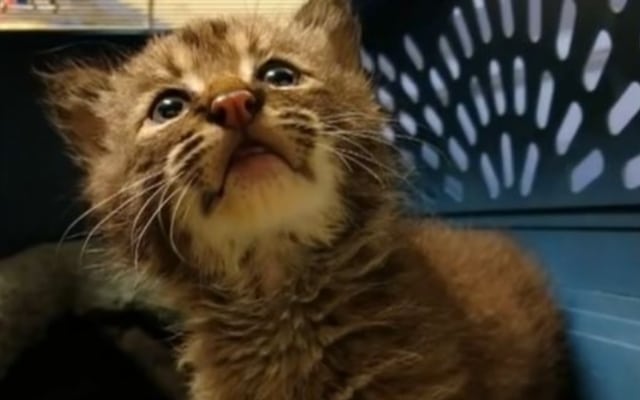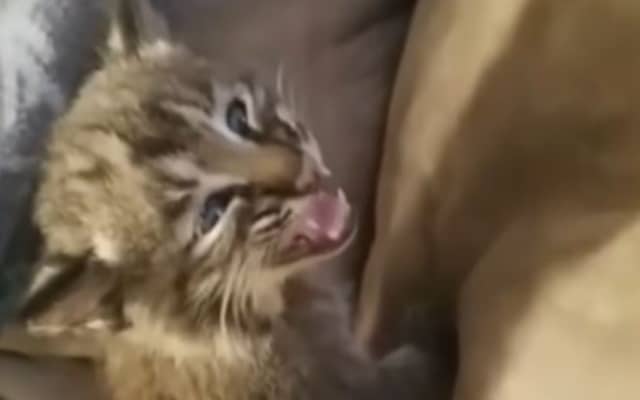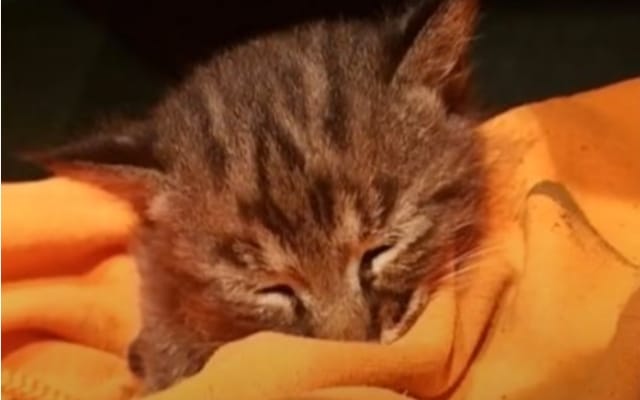Many animal lovers would spring into action at the sound of a distressed animal. This instinct to help was vividly illustrated by Jared Allen Yost, a dedicated landscaper from Minnesota, who encountered a surprising situation at work.
While busy with his landscaping duties, Yost heard the unmistakable cries of a distressed animal. Intrigued and concerned, he followed the sound and discovered a tiny kitten in need of help. Without hesitation, Yost, known for his love of animals, decided to intervene.
“I went over to help whatever was making those noises,” he told The Dodo.

To his astonishment, the kitten he found was not just any ordinary cat. It was an exceptionally cute and seemingly helpless kitten that needed shelter, especially with a storm approaching and no mother cat in sight. Yost’s compassionate nature led him to take the kitten home, offering it warmth, food, and a temporary family. He even scheduled a vet appointment for the next day.
However, things took an unexpected turn when Yost and his family noticed something unusual about the kitten. Its meows were distinctly different—louder and unlike any cat sounds they had heard before.
“Not like a normal ‘meow’,” Yost described.
This peculiar behavior sparked Yost’s curiosity, prompting him to do some research. He compared the kitten’s features with those of baby bobcats found online. The similarities were striking: white triangles behind the ears, oversized paws, unique nose markings, and a notably short tail.

Realizing he might have more than a stray kitten on his hands, Yost contacted the Minnesota Wildlife Rehabilitation Center, sharing photos of the animal. The professionals there confirmed his suspicion: the “kitten” was indeed a baby bobcat.
Understanding the bobcat required specialized care, Yost entrusted it to the rehab center. The center’s experts embarked on the task of nurturing its wild instincts, with the goal of eventually releasing it back into its natural habitat. Yost was kept informed of the bobcat’s progress and was thrilled to hear that she was doing well.
“She’s doing great!” Yost shared with The Dodo, “It sounds like she will be released in early fall.”

The Smithsonian’s National Zoo notes that bobcats are highly adaptable and can thrive in various habitats, from northern forests to southeastern swamps and southwestern deserts.
Reflecting on the experience, Yost expressed profound gratitude for the unexpected adventure. “It was an awesome experience and I would do it over and over again,” he said.
Yost’s story is a touching reminder of the wonders of wildlife and the critical role of rehabilitation centers in giving wild animals a second chance at life. It also highlights the importance of ensuring that the animals we bring into our homes are indeed domestic pets.

